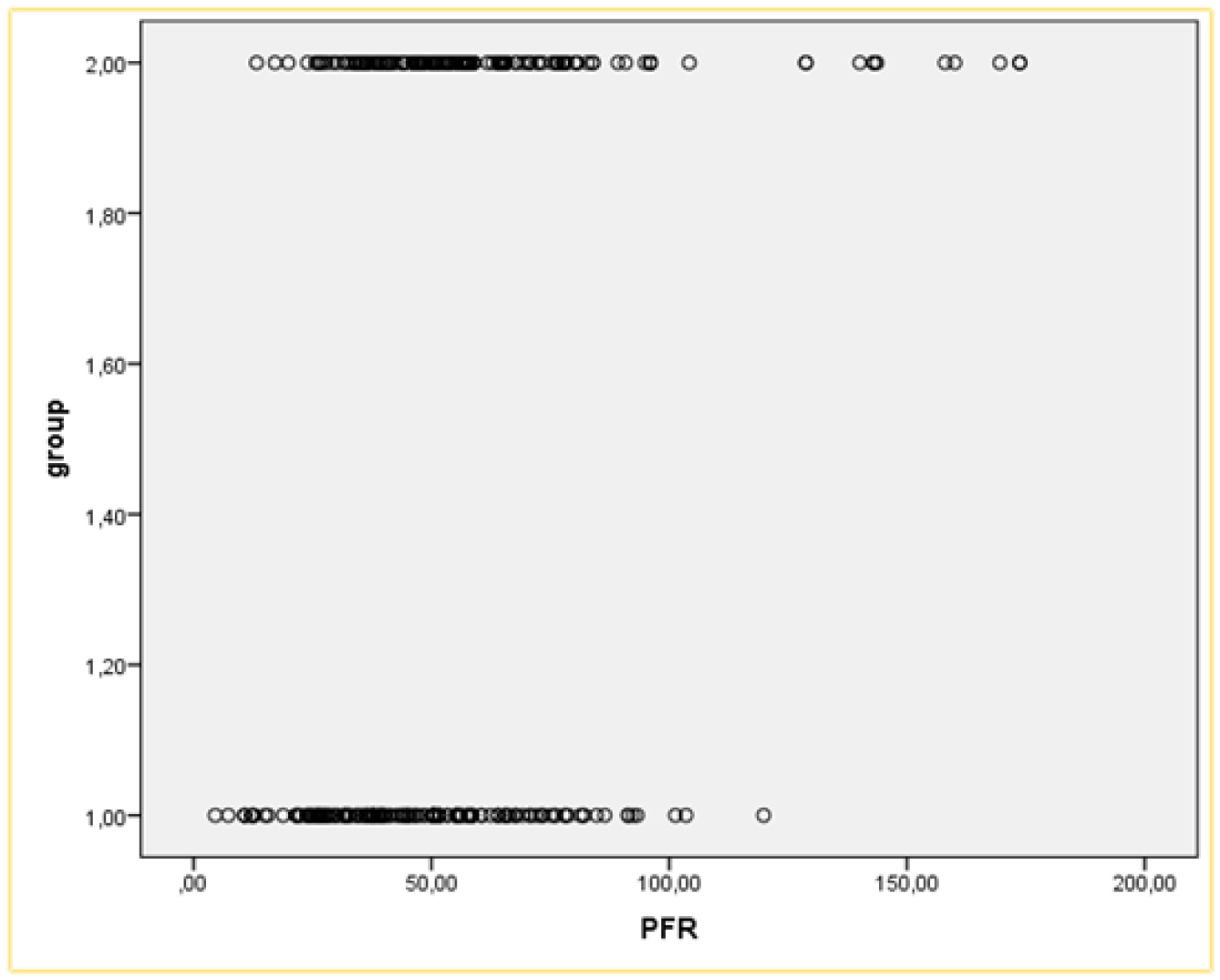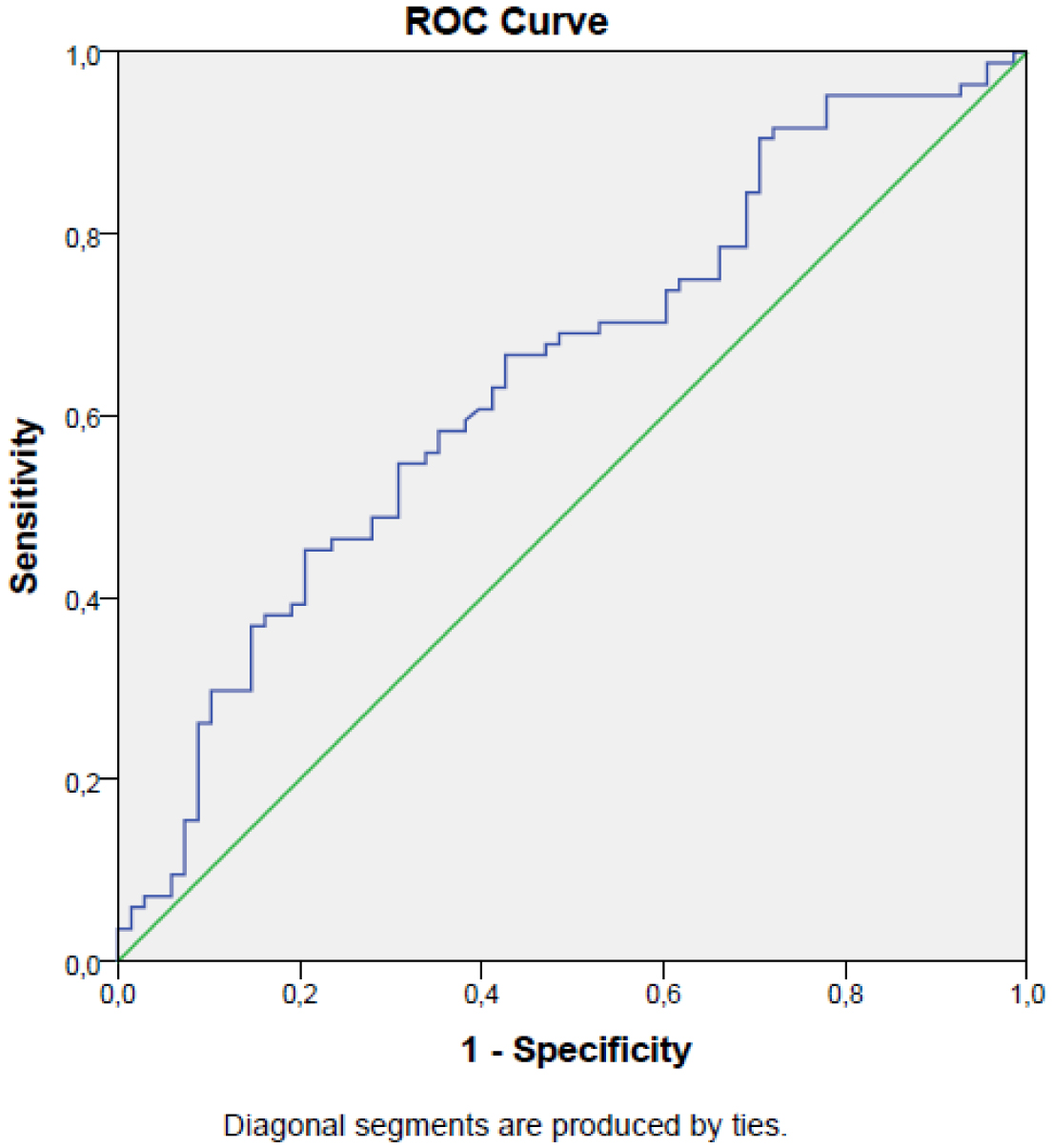1.
Introduction
Type 2 diabetes mellitus (DM) is a chronic metabolic disease and is an important cause of morbidity and mortality around the world, which is characterized by insulin resistance and hyperglycemia. In a report in 2014 by the World Health Organization, more than 422 million adults have DM and its prevalence is expected to increase [1].
As a complication, diabetic nephropathy (DNP) is an important cause of morbidity and mortality and is a serious factor for rise in the frequency of death due to cardiovascular causes [2],[3]. The primary goal is to control the symptoms, treatment, and risk factors of DM [4]. Changes due to diabetic nephropathy can affect all renal compartments. Renal atherosclerosis and arteriolosclerosis constitute an important part of vascular lesions in diabetic patients. Good glycemic control and tight blood pressure control are important in preventing microvascular complications in diabetic patients [4],[5].
Fibrinogen is also used as a marker of coagulation and chronic inflammation. High fibrinogen values are also elevated in microvascular complications of DM [6],[7]. In recent studies, prealbumin is a good indicator of nutrition and has been used as an indicator of inflammation, inversely correlated to high C-reactive protein (CRP) [8]. In addition, Prealbumin/Fibrinogen ratios (PFR) have been used as new markers in inflammatory diseases such as acute pancreatitis and malignity in recent studies [9].
Our aim in this study is to assess the relationship between the diabetic nephropathy and PFR levels, which is an inflammatory marker in type 2 diabetic subjects.
2.
Materials and methods
2.1. Study population
This prospective study was conducted with the ethical approval numbered 2022/205 after the approval of the university hospital administration. People with type 2 diabetes who attended the internal medicine outpatient clinic between June and September 2022 for control were enrolled in the present cross sectional study. Patients were being informed and signed a voluntary consent form before inclusion. Patients with active infection, inflammatory condition, malignancy, pregnancy, recent trauma, or surgical procedure history were excluded.
Age, gender, systolic and diastolic blood pressure, body mass index (BMI), waist circumference, duration of diabetes, retinopathy, neuropathy, and antidiabetic drug regiments were recorded. Hemoglobin (Hb), hematocrit (Htc), white blood cell (Wbc), platelet (PLT), mean corpuscular volume (MCV), urea, creatinine, glomerular filtration rate (GFR), fasting blood glucose, glycated hemoglobin (HbA1c), liver enzymes, C-reactive protein, lipid profile, prealbumin, albumine, fibrinogen, spot urine creatinine, and spot urine protein values were recorded separately. The proteinuria of the patients was calculated mathematically using the formula: Spot urine albumine/spot urine creatinine x100. Patients with proteinuria above 200 mg/g were considered to have nephropathy. Also, the prealbumin/firinogen ratios were calculated.
2.2. Statistical analyses
Statistical data analysis was calculated using the IBM Statistics 16.0 (SPSS) package program. Normal distribution of continuous variables was evaluated by the Kolmogorov Smirnov test. Data that fit the normal distribution were presented as mean ± standard deviation, and those that did not fit were presented as median and interquartile range (IQR). The categorical variables were shown as frequencies and proportions, and analyzed using the χ2 test. The difference in the mean and median between the two groups was compared with the Mann-Whitney U test and the independent samples t test. Spearman correlation test was used to evaluate the correlation. p < 0.05 was accepted as significant for statistical analysis.
3.
Results
A total of 152 patients who visited our outpatient clinic for monitoring were included in the study and were divided into two groups: 68 patients with diabetic nephropathy and 84 patients without nephropathy. Among those without nephropathy, 44 (52.4%) were women, while among those with nephropathy, 45 out of 68 patients (66.2%) were women. However, gender distribution did not reveal a significant difference between the two groups (p = 0.09). The mean age of patients without nephropathy was 58.4 ± 9.9 years, compared to 60.7 ± 10.4 years for those with nephropathy (p = 0.023). When evaluating the duration of diabetes as shorter or longer than 5 years, 40 (47.6%) patients without nephropathy had diabetes for less than 5 years, while 22 (32.4%) patients with nephropathy were diagnosed with diabetes for less than 5 years (p = 0.057). The mean BMI was 32.5 ± 5.5 in the non-nephropathy group and 32.8 ± 6.9 in the nephropathy group, indicating no significant difference (p = 0.95). Similarly, there was no statistical difference between the nephropathy and non-nephropathy groups in terms of systolic and diastolic blood pressure (p = 0.96, p = 0.85).
As anticipated, the rate of retinopathy, a common complication of type 2 DM, was significantly higher in the nephropathy group (p = 0.004). Twenty-one out of 68 patients (30.9%) with nephropathy had retinopathy, while only 10 out of those without nephropathy (11.9%) had retinopathy. However, the rate of neuropathy was similar between the two groups (p = 0.057). Although the nephropathy group had slightly more diabetic neuropathy patients (24, 35.3%) compared to the non-nephropathy group (18, 21.4%), this difference was not statistically significant. Only 3 patients had diabetic foot ulcers or infections: 2 patients in the nephropathy group and 1 in the non-nephropathy group, which was too low for a statistical comparison.
Upon analyzing the patients' laboratory results, it was found that hemoglobin levels were higher in the non-nephropathic group with an average value of 13.9 ± 1.7 g/dl compared to the nephropathic group (p = 0.01). Alanine aminotransferase (ALT) levels were significantly higher in the non-nephropathic group (21 U/L, range 9–120) compared to the group with nephropathy (14 U/L, range 6–122) (p = 0.004). CRP levels were higher in the nephropathy group (p = 0.047). Glomerular filtration rate (GFR) was 89 (14.8–128.6)% in the non-nephropathic group and 82.5 (15.1–111.8)% in the nephropathic group (p = 0.008). HbA1c values were 7.9% (range 4.9–17.8) in the nephropathy group and 7.5% (range 5.2–13) in the non-nephropathic group (p = 0.043). A summary of patients' laboratory results and other parameters is provided in Table 1.
Urea levels were significantly different between the nephropathic and non-nephropathic groups, with 40 mg/dl (range 18–161) in the nephropathic group and 37 mg/dl (range 17–258) in the non-nephropathic group (p = 0.019). This disparity was expected due to the definition of the nephropathy group relying on renal function. Additionally, the proportion of proteinuria, as determined by the spot urine albumin/creatinine ratio, was statistically higher in the nephropathic group (296.7, range 203.1–18738) compared to the non-nephropathic group (129.6, range 40.8–186.8) (p < 0.001).
Our focus in this study was the prealbumin/fibrinogen ratios (PFR), which were 0.08 (0.01–0.75) in the non-nephropathic group and 0.06 (0.02–0.16) in the nephropathic group. Our findings indicated that PFR was significantly lower in nephropathic patients than in non-nephropathic patients (p = 0.002). Figure 1 illustrates the correlation between PFR and DN.
We conducted ROC analysis to assess the reliability of the prealbumin/fibrinogen ratio in detecting diabetic nephropathy. PFR levels lower than 0.06 demonstrated 69% sensitivity and 50% specificity in detecting diabetic kidney disease (AUC: 0.64, p = 0.02, 95% CI: 0.56–0.73). Figure 2 displays the ROC curve of PFR in predicting DN.
4.
Discussion
Our main result shows that PFR is significantly lower in diabetic patients with diabetic nephropathy compared to those without diabetic kidney disease. Moreover, PFR had a considerable sensitivity and high specificity in detecting diabetic nephropathy in patients with type 2 DM.
In recent studies, it has been shown that there are many increased inflammatory biomarkers relating to becoming DNP [8]. Prealbumin is a negative acute phase reactant and decreases, while fibrinogen increases with inflammation [10]. PFR is decreasing as expected in cases with inflammation [11]–[13]. Since diabetic nephropathy is also a condition characterized with continuous low grade inflammation, decreased PFR in subjects with diabetic nephropathy presented in our study is not surprising.
In a study by Chen et al., it was found that PFR may have a role in the development mechanism of diabetic nephropathy with genetic stimuli induced by inflammation and oxidative stress [13]. Hou et al. mentioned that, for patients with glioma, PFR might be used as a negative prognostic marker in the future [14]. Not only PFR but also other inflammatory markers have been suggested to be related with diabetic nephropathy in type 2 diabetic populations. The CARE TIME study revealed that CRP/albumin ratio as a strong indicator of diabetic kidney injury [15]. In another study, hemogram derived markers were found to be associated with diabetic nephropathy [16]. Similar to literature data for another inflammatory marker, PFR has been introduced as predictor of diabetic nephropathy in this study.
In a meta-analysis, the albumin-fibrinogen ratio and fibrinogen-prealbumin ratio, when used as promising prognostic markers for cancers, showed a low albumin-fibrinogen ratio and a high fibrinogen-prealbumin ratio correlated with increased risk of cancer mortality and recurrence [11]. In another study by Wang et al., PFR showed promising value as a novel inflammatory marker for disease activity in rheumatoid arthritis patients [17]. Prealbumin, fibrinogen, and haptoglobulin measured in patients cereprosipinal fluıd with Guillain-Barré syndrome showed that prealbumin and fibrinogen are low [18]. Consistent with literature data, we found decreased PFR levels in diabetic nephropathy, a condition characterized with chronic inflammatory burden.
PFR was also evaluated in the diagnosis and prognosis of diabetic neuropathy, and the PFR was significantly higher in the patients with diabetic neuropathy [19]. In many studies, nutrition, inflammation, and genetic coagulation are associated with the formation of diabetic nephropathy [20]–[23]. Nutritional indexes [24] and metabolic markers [25] are also associated with diabetic kidney damage. PFR may reflect the background inflammatory process and coagulation abnormalities in subjects with diabetic nephropathy.
Considering recent studies, we investigated the association between PFR and diabetic nephropathy. Our prime finding in this study was that PFR is negatively associated with DNP, and it could be used as a predictor for DNP diagnosis. However, this study has some limitations: The cross-sectional method is one of them. Longitudinal studies may be useful in providing better information for these relationships in the future. Another limitation to mention is the relatively small study population.
5.
Conclusions
In conclusion, we suggest that decreased levels of PFR can indicate diabetic nephropathy in subjects with type 2 diabetes mellitus. It can be a useful adjunctive tool in evaluation of nephropathy in diabetic populations.
Use of AI tools declaration
The authors declare they have not used Artificial Intelligence (AI) tools in the creation of this article.









 DownLoad:
DownLoad:





